A solitary crocodile swam across 50 miles of open ocean to arrive at Ft. Jefferson. He’s worth studying, but first you have to catch him.
Mark Parry is face down in the moat that encircles Fort Jefferson in the remote Dry Tortugas National Park.
He is wearing a mask and snorkel and swimming headfirst, as hard as he can, into a hurricane fence temporarily erected across the moat, testing its effectiveness as a corral for large reptiles.
Parry is a field biologist at Everglades National Park, which has dominion over this chain of protected islands 70 miles away from Key West in the Gulf of Mexico. His fencing is supposed to help capture one of the Everglades’ more wayward sons, a crocodile named Cleatus.
Naming crocodiles is dodgy business. They are not pets. They are not anthropomorphized Disney characters. They are wild and primitive animals whose ancestors opted out of evolution several million years ago, and they have a lot of teeth.
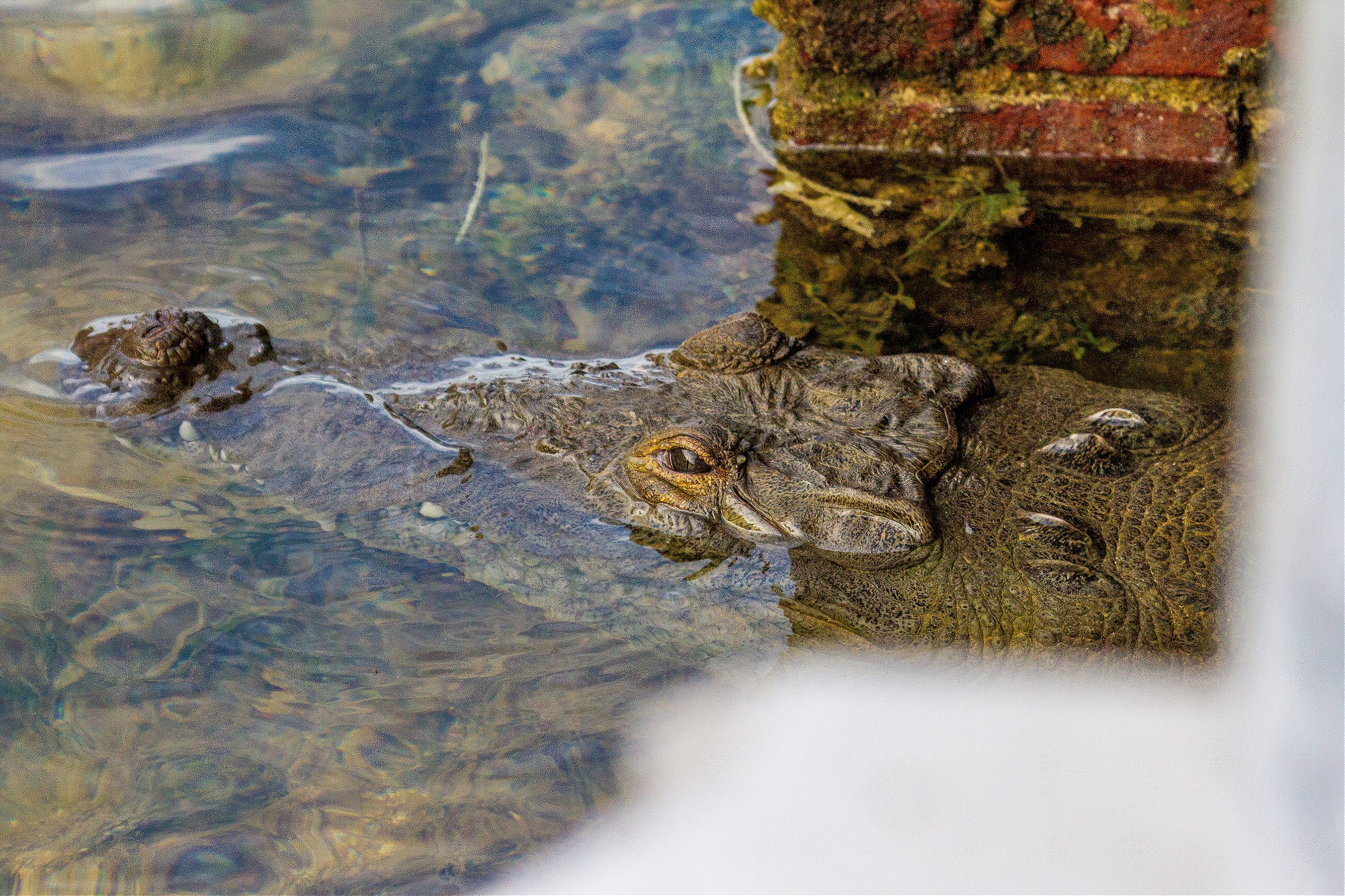
But Cleatus is unique, at least in terms of chosen home, and any cute notions his name might evoke are negated by his actual physicality, which tends to provoke a visceral and instinctive reaction. (This is evidenced in a YouTube video in which a snorkeler with a GoPro swam through a cloud of minnows and happened upon him resting upon the sandy bottom, swaying gently in the tide, thinking his crocodile thoughts.)
Cleatus showed up at the heavily touristed park in 2003 – of his own volition. He is an American Crocodile, a species distributed throughout the Caribbean. North America is the northern end of its range, and they only exist here in the extreme southern tip of the Florida peninsula, the population diminishing exponentially the farther you travel down the Florida Keys.
The American Crocodile is far less common than the other species of crocodilia found in the U.S., the American Alligator. Before being listed as endangered in the 1970s, there were only about 300 individual American Crocodiles left in the country, largely due to hunting and land development. Since receiving protection, their numbers have climbed to about 2,000 to 3,000 individuals, and their status has been downgraded to threatened.
Cleatus is the first crocodile recorded here in 500 years
Unlike the American Alligator, there are no documented American Crocodile attacks on humans in this country, and few elsewhere. They are thought have taken a few dogs in Key Largo.
A DNA sample from a 2008 capture—the one time Parry has caught him before—showed that Cleatus’ mother came from the population at Everglades National Park, and that the “paternal component most closely matches Jamaican-origin crocodiles.”
Which in biologist-speak means the father may have been from Jamaica (but they can’t say for sure), may have swum around Cuba to get laid (but they can’t say for sure), and that papa, like his son, may have been a bit of a rolling stone. And Cleatus remains alone.
Despite his disquieting presence, the National Park Service is not likely to remove Cleatus. The ethos is to let wildlife roam freely, even if the wildlife does freak some people out. Parry is only looking to keep him long enough to collect some data and make a “growth health assessment.” Since Cleatus is such a geographic outlier, the park staff wants to monitor how he thrives in an environment with no fresh water.
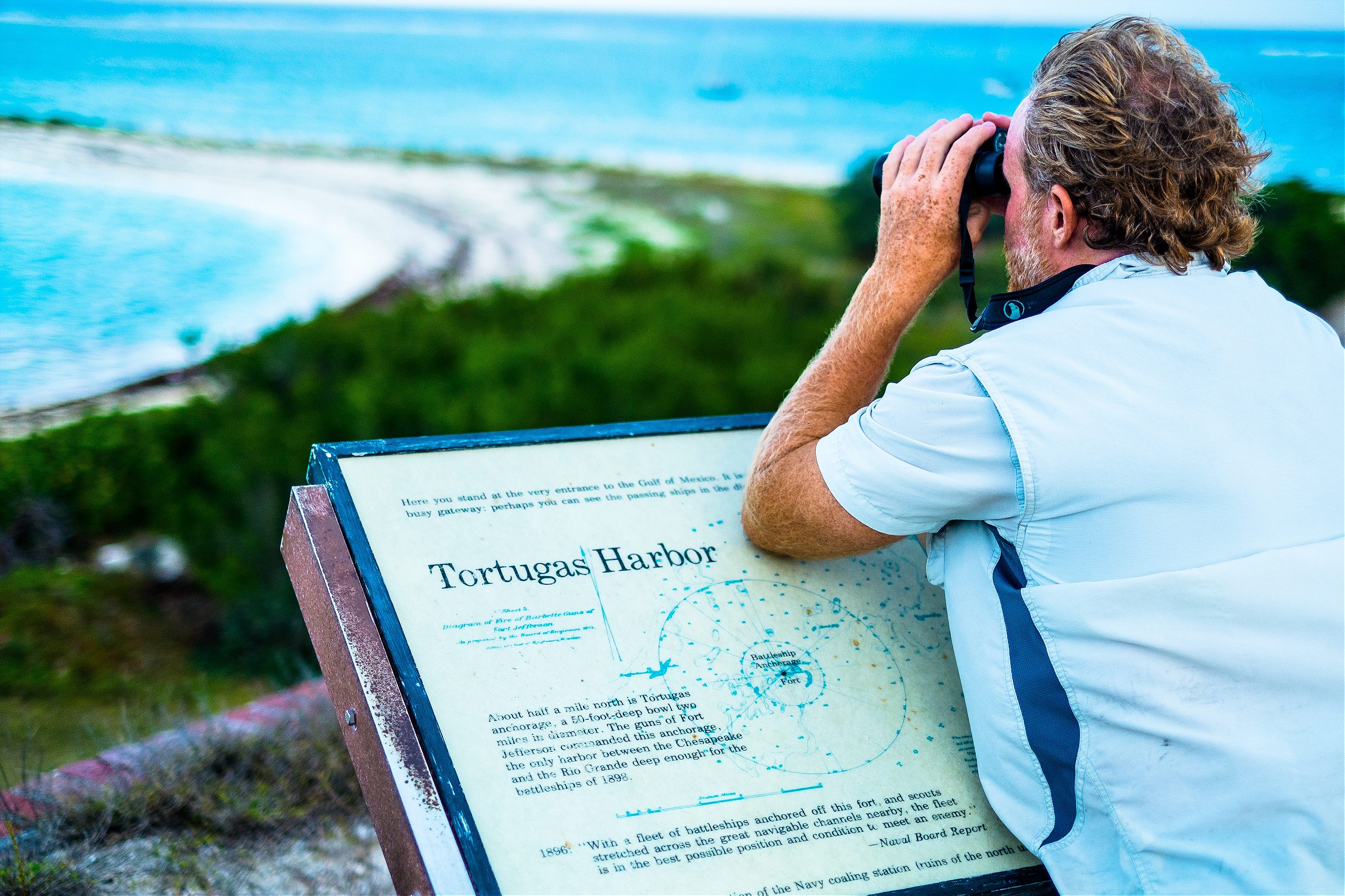
As he works, Parry comes across as laid back, erudite and funny—the polar opposite of the yahoos on the gator-oriented reality shows, disinclined towards the goofy showboating of someone like Steve Irwin.
Still, you get the feeling that like most field biologists, he isn’t in it for the paycheck and the health insurance, that while this is professional work, there’s a satisfying amount adventure and risk in it.
Parry has caught several hundred alligators and crocodiles over his career—thousands if you count the young ones. He has caught them from folding jon boats in the glades and from surfboards in Jamaica. He has caught hatchlings in a pond from an inflatable mattress. The sketchiest time, he’ll tell you, was in Cambodia when he crawled into a cramped floating pen full of small-but-aggressive Siamese Crocodiles, and tried to pick out the wild ones from the farm raised ones.
While Parry is working on the corral, it is possible that Cleatus is lurking in some dark corner of the canal, but the prospect of coming face to face with the croc doesn’t worry him as much as the prospect of not coming face to face with him, of missing his chance.
The federal government shutdown had scuttled a planned October trip. Now, eight months later, he has 36 hours before he has to be back on the ferry to Key West. If he doesn’t catch the croc, he doesn’t know when he could try again.
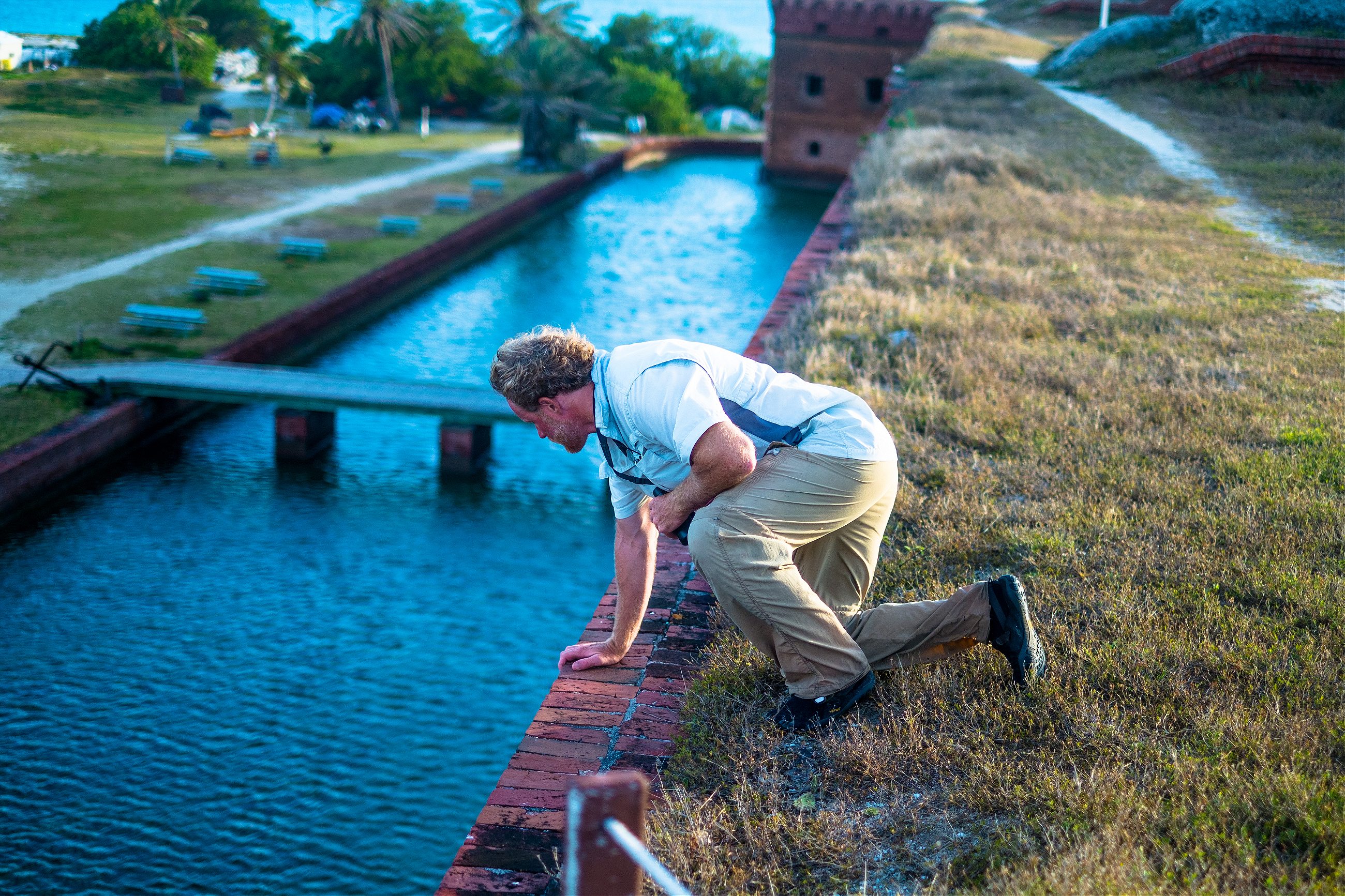
Late in the afternoon, the crocodile hasn’t materialized in the moat, nor has he been seen from the fort. Parry makes a decision: we would take out one of the Park Service boats after dark to look for him.
Crocs’ highly sensitive night vision means they have large, highly reflective retinas that glow like embers when hit with a bright light in the dark, making it difficult for them to hide.
Around nine, the sun is long gone. We meet on the dock and Parry gives a briefing, eating pasta salad from a Tupperware while he does so, occasional waving the fork to make a point.
He stresses that the priorities are to keep people from getting hurt, to keep the crocodile from getting hurt, and to collect data.
Parry and I are joined by wildlife biologist Brehan Furfey and Kayla Nimmo, a biological technician at the fort who would drive the boat. Wayne Mitchell, an EMT, is also along should anything go wrong.
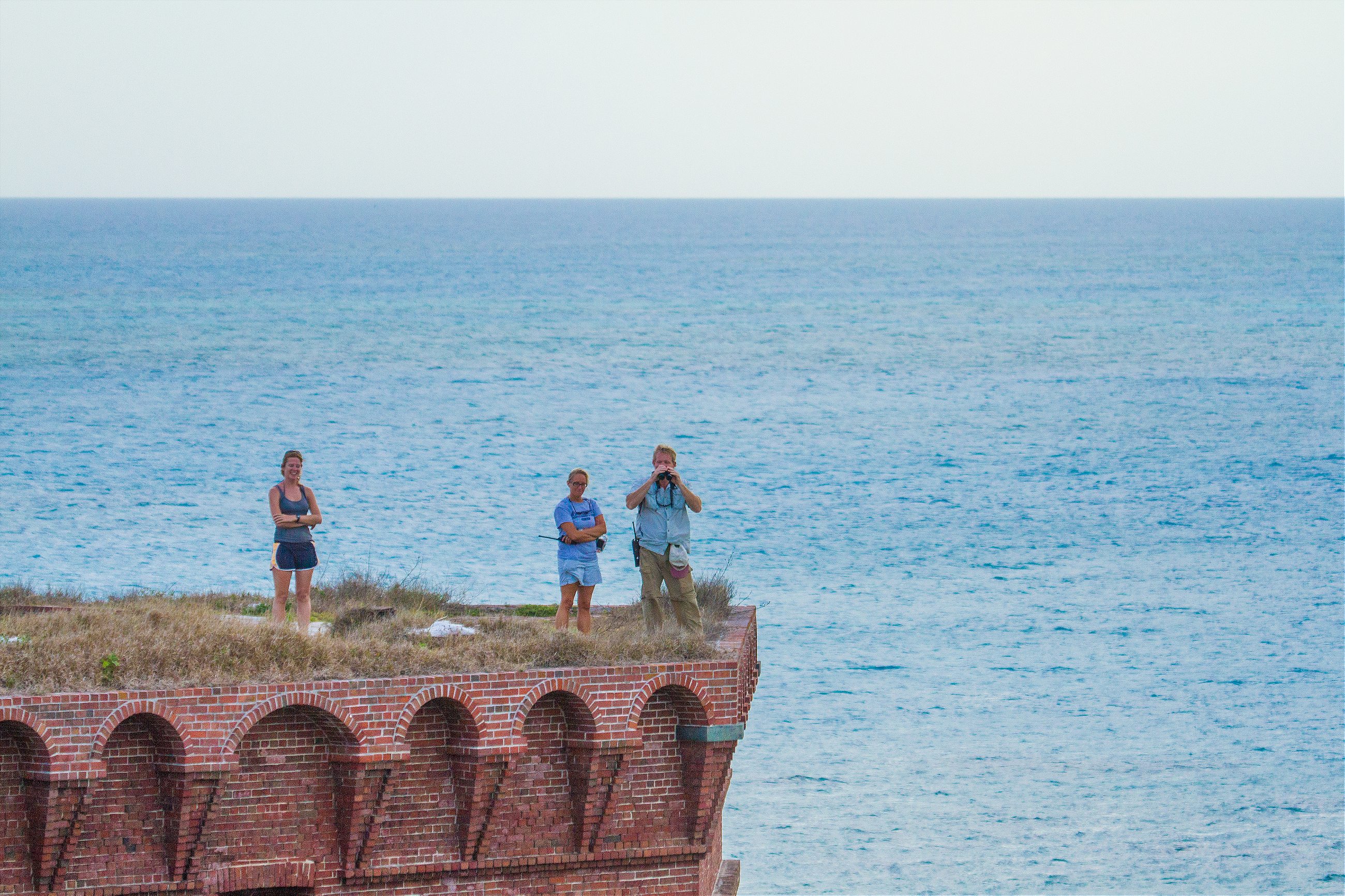
Parry does not call the crocodile Cleatus. He refers to him as “the animal”.
“We might be just wasting our time, we might not even see it,” he says.
The reasons for this are multiple. It is, as the sailors say, blowing snot, the wind gusting up to 20 miles per hour at times. Which means the animal would probably be somewhere in the lee, which would probably be out of direct line of sight. It is also a full moon, which means if he approaches the croc, Parry might be backlit and in silhouette, and the animal would see him coming.
Parry says that since Cleatus hasn’t been chased in a while, if he approaches the animal, it might sit and let him slide a noose over its head. Which doesn’t mean that what would follow would be easy.
“A big animal can roll up a rope,” he says. “You try to keep that animal somewhat perpendicular to you. If they wrap it, and get sideways, and start doing a death roll, they can actually roll themselves into a boat.” Like a yo-yo rolling up a string.
A gator once “tail walked” across the surface of the water
He says he used to warn people about this, and then tell them it never actually happened. Until it did one night.
“If I say something like ‘It’s coming in the boat…’” he says, and laughed. “This is not going to happen guys. But if I say ‘It’s coming in the boat.’ Get on the other side of the console. Let the animal do its thing.”
He also tells another story about the time he snared a gator, and it dove deep, then shot up vertically and “tail walked” across the surface of the water.
Also, there are the snaggle teeth—exposed teeth that sometimes grow at odd angles out of the mouths of crocodiles, occasionally through their nostrils. If the animal spins or thrashes, they can cut you good.
We cruise along the edge of Bush Key. Occasionally one of the 50,000 Sooty Terns nesting there crosses the bow and flashes through the spotlight.
Nimmo has a GPS, but mostly navigates the coral heads and sandbars of the shallow harbor by memory.
Parry scans the shoreline. Nothing, and more nothing.
Parry moves the spotlight over a low bush and down the shoreline. Then it moves back to the bush. Beneath it, two golden marbles shimmer emphatically. Cleatus.
Nimmo finesses the boat until it is a hundred yards from the bush and says that’s as far as she can go.
Parry slips off the front of the boat into shin-deep water and starts moving forward, a noose on an eight-foot pole in his hand.
At the edge of the bush he stops, flicks on his headlamp, and sticks his head in. A second later he shoves the snare pole in, followed by the upper half of his body.
The shadow of a croc shoots past Parry, all splash and froth. About ten feet beyond him the animal stops, a taut rope describing a perfect 45-degree vector between where the croc was trying to go and where Parry stands. The croc’s mouth is open. Its teeth gleam in the moonlight.
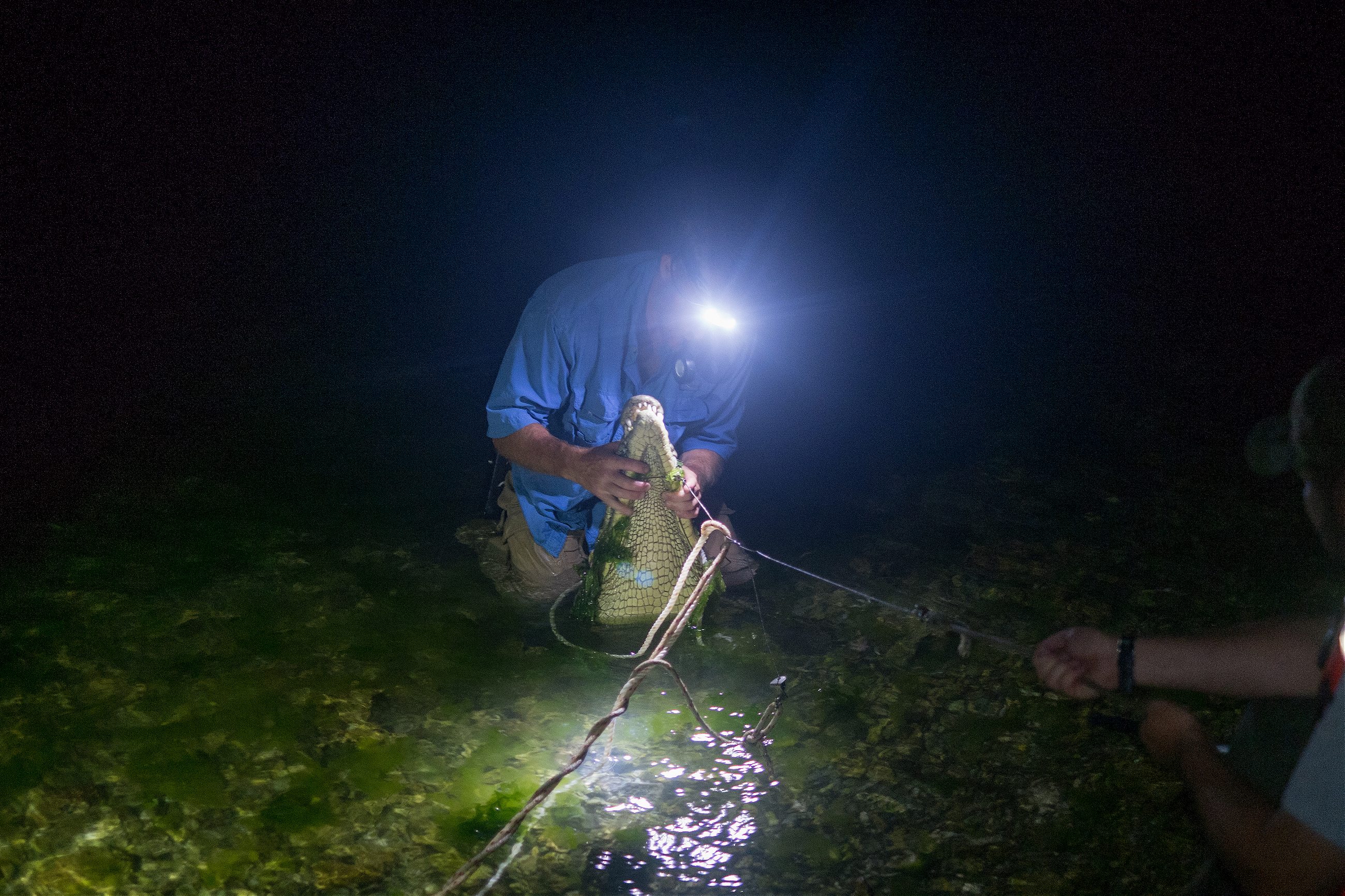
Parry walks the animal along the shore like an angry dog.
He yells to Nimmo about where to land the boat and Nimmo yells back that she’s staying in the boat with the engine running to keep it from getting blown onto the beach.
Everyone else goes over the side and tries not to trip on the uneven heaps of broken coral that make up the shoreline.
The croc is close by, facing away from us, looped several times in a small cyclone of rope, still trying for the deep water. Periodically he does a slow death roll, but it seems pro forma.
Parry slips a second noose over the croc’s head and the animal grabbed the pole and snapped it in two, clenching the pieces in his teeth.
The croc turns towards us. Everyone backs up.
“Give him some room. Don’t let him get that close to you,” Parry says. “Most of the time at this point, all they want to do is get away.”
With a second rope looped around the croc’s head, Furfey and Mitchell stand back on opposite sides, holding the ropes tight.
Parry walks a wide arc, then approaches from behind, all ninja and stealth. He bends low and lays a hand on the space between the croc’s shoulders and pushes down with increasing pressure. Then he straddles the croc.

When the croc doesn’t immediately thrash, he brings a hand forward, puts it slowly on top of the snout, and pushes the snout down—under the water and to the bottom—until it shuts.
Crocodiles can exert thousands pounds of pressure when they bite down—enough to pop the skull of a pig— but the musculature used to open their mouth is relatively weak.
Parry slips a hand around the edge of the snout, pinches it shut, and pulls it high up out of the water, as if coaching the animal through a yoga pose.
He puts his face inches away from the croc’s.
“He does have a little bit of an old eye injury. Seems to be healing,” Parry says.
He is happy to note he didn’t see any snaggleteeth. He tapes the mouth loosely shut with electrical tape, then uses a pair of pliers to pull the chunks of the noose pole out of his mouth. He starts to re-tape the mouth.
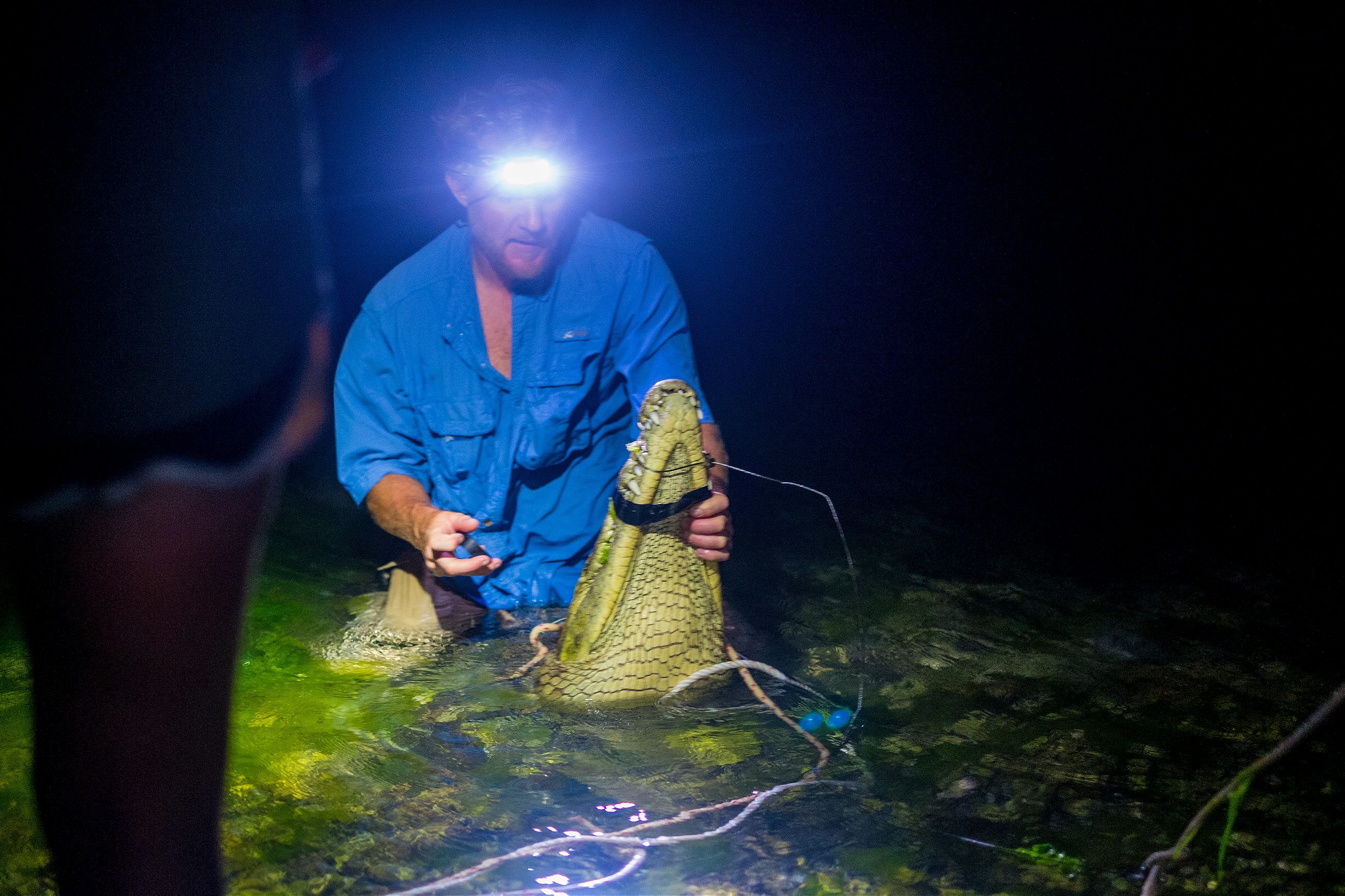
“This tape sucks. What brand is this?” he says.
Furfey finds a different roll and wraps the snout while Parry holds it closed.
They lift the croc and carry him, legs dangling, up onto the beach, and set him in a patch of turtleweed.
The animal lays flat and straight, eyes impassive, torso bellowing slightly with each breath.
“It’s a dinosaur,” Parry says. He kneels and keeps a knee on the croc’s shoulder.
Mitchell says, “He seems pretty calm. Is that when they slap around?”
“He might. They lull you into a false sense of security, and then they explode as they get their energy back,” Parry says. “Ten in a row behave, the next one just explodes.”
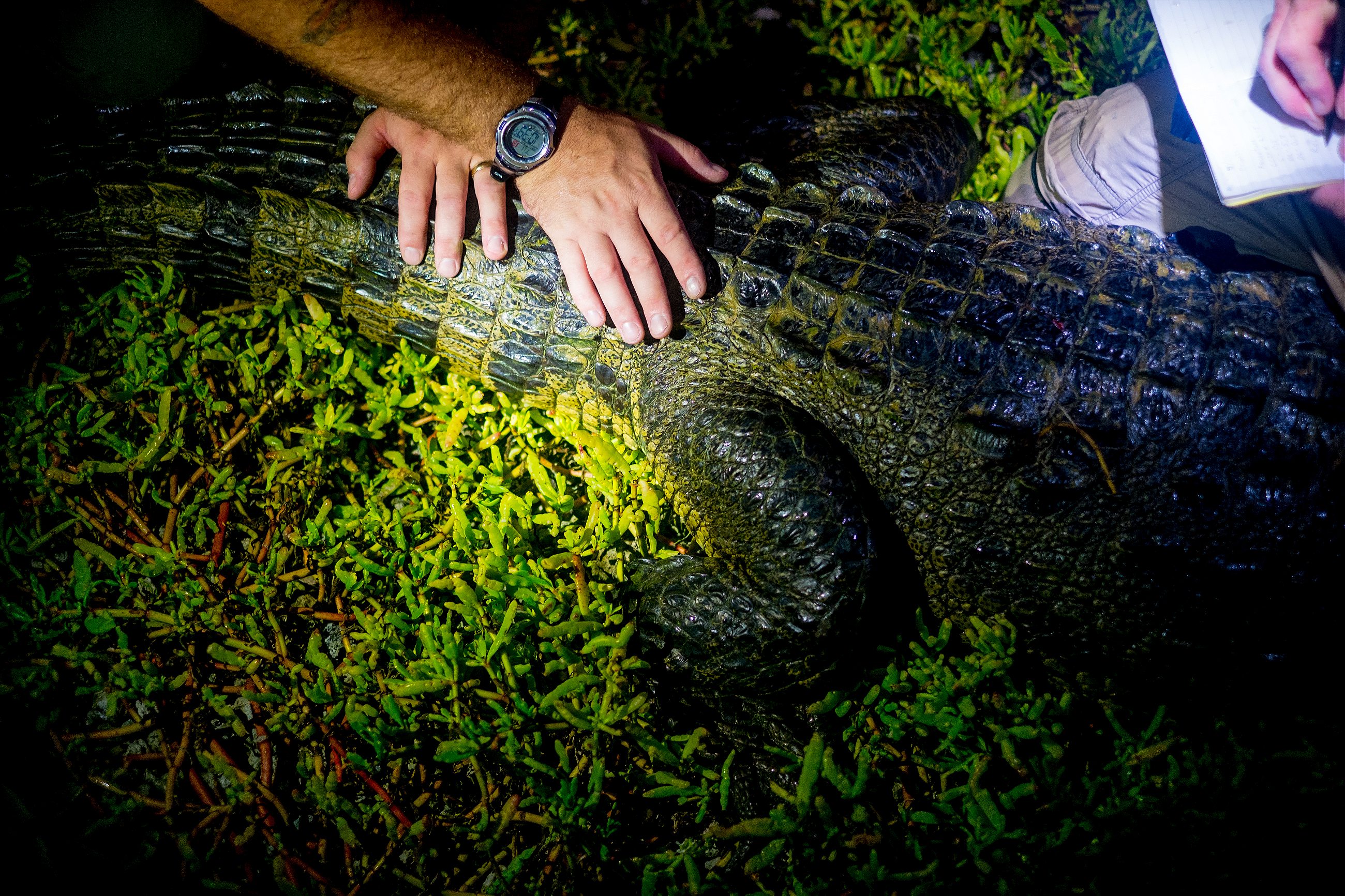
He focuses on the scutes (the sawtooth ridges that run the length of the tail) and whorls (the gaps between them). In order to identify crocodiles they’ve captured, biologists use a knife to slice away scutes and carve a code into the tail. (The scutes are cartilage and mostly nerveless.)
Parry points at the ridges with a pen, counting out loud, making sure he is translating the code correctly, and that this is, in fact, the same crocodile he’d caught six years before.
He pulls out a yellow cloth tape measure.
“We need head length, snout-vent length dorsally, total length, tail girth, mass, sex…”
The croc is just under nine feet–a foot longer that 2003–and about 70 kilograms.
Parry gives a running tutorial on the croc’s physiology while he measures things.
“So, that’s the nictitating membrane. That’s their swim goggle. That protects their eyes and it comes backwards so it doesn’t trap air.
“This is the ear. They can close or open it at will, to hear better above the waterline. Their ear is under there.
“There’s a musk gland, that’s a pain in the ass to get to, so I’m not going to mess with it.
“See these little dots? They’re called DPRs—dermal pressure receptors. True crocodiles have at least one on every scale on their body. Alligators and caiman don’t.

“They haven’t proven that they’re all still functional. They may be vestigial on the rest of the body. But on the jawline they work just like a lateral line on a fish, so they can determine differential pressure. If something is splashing over there, or whatever, the pressure waves are stronger on this side, than this side. They can figure out how big [the prey] is, where it is… they can locate it without seeing it. You’ll see them there sometimes in the water, and all the sudden they’ll go down to grab a fish. They didn’t see it, they felt it. They knew where it was.”
Mitchell goes to the boat and tag-teams Nimmo so she can come out and see the animal.
“Do you want to check the sex?” Parry asks her. “The vent is going to be right about here,” he says, pointing just behind the legs.
“Put your finger up and forward, and lift the tail a little… Find the vent, reach in there. Feel anything?” he asks.
“Yeah,” Nimmo says.
“That’s a male,” he says.
Nimmo sits on the croc while Parry recuts some of the scutes where the cartilage had partially grown back.
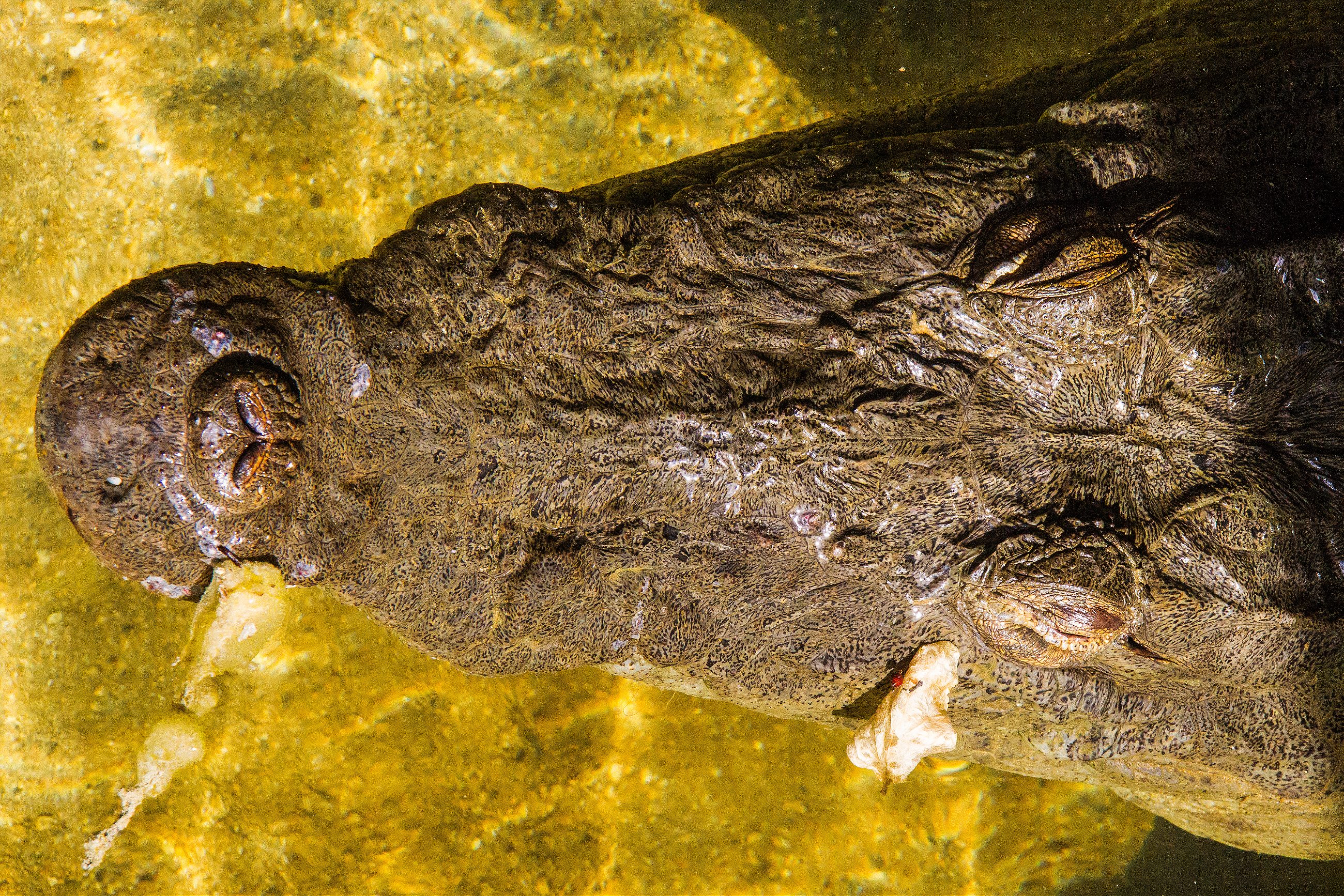
“Typically, as long as they feel weight, they don’t try to do anything. But when I cut those scutes he might react,” Parry says. “You can’t hurt him. You don’t weigh enough.”
“Do I weigh enough to do this?” Nimmo asks.
“Yeah,” Parry says. “Probably.”
“This is the one he might react to,” Parry says, beginning to cut the last scute. “I can feel him tensing up. Almost done. That’s it.”
Nimmo points out a thunderstorm approaching over the moonlit water.
Parry takes a rope and loops a bowline through the electrical tape under the croc’s snout.

“I like the way that you’ve behaved,” Parry says to the animal.
“We’re going to get you back in the water.”
He and Furfey pick up the animal and gingerly walk him in, tail first. They set him down and step away.
From shore Parry yanks the rope and the tape rolls off the nose.
There is some quick splashing, then it stops. The water calms. The shadow of the croc merges with all the other shadows in the night.